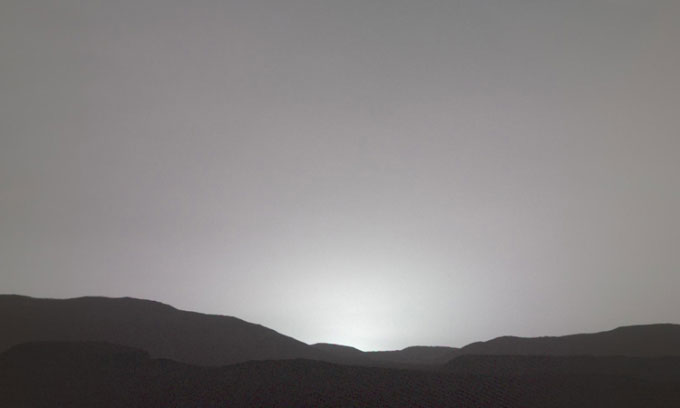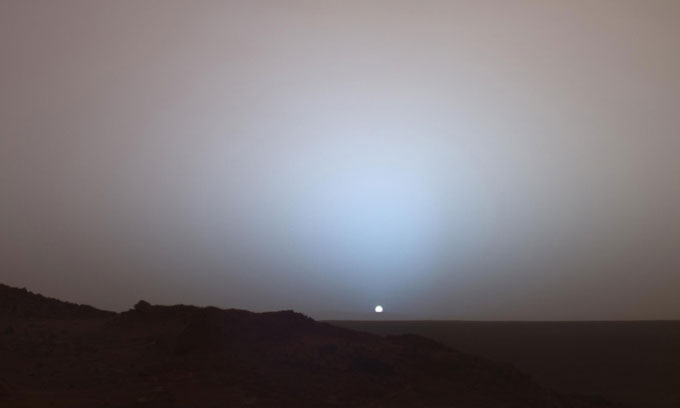The sunset on Mars captured by the Perseverance rover lacks the typical blue hue due to the atmosphere containing less dust.

Sunset on Mars captured by the Perseverance rover on November 9. (Image: NASA).
The Perseverance rover took its first photo of a Martian sunset on November 9, the 257th day of its mission (measured in Martian days), using its Mastcam-Z camera system. In the image, the sun has set behind the mountains of the Jezero Crater, where scientists believe water once filled the area.
Martian sunsets are typically blue, but this new image is different. The reason is that there was not much dust in the atmosphere when Perseverance pointed its lens upward to take the photo.
Mars is well-known as a dusty desert planet. “Fine dust in the atmosphere allows blue light to penetrate better than colors with longer wavelengths. This sunset appears different because of the lower dust levels in the atmosphere, resulting in a more subdued color palette than usual,” NASA explained.

The Spirit rover captured a blue sunset in Gusev Crater, Mars, in 2005. (Image: NASA).
Perseverance landed on Mars on February 18. The rover has been busy with various tasks on the surface of the red planet, which is why it has only recently been able to capture images of the sunset. Its primary mission is to search for signs of ancient life. It will study intriguing rock and soil samples that may contain traces of life, such as organic materials once absorbed by microorganisms. Additionally, the rover is investigating the climate and geology of Mars in the past to facilitate human exploration of the red planet.
Perseverance has begun collecting rock and soil samples for a future mission to bring these materials back to Earth. So far, under NASA’s guidance, the rover has collected and stored three rock and soil samples in titanium tubes. One day, these samples may help scientists determine whether any living organisms ever thrived in the lakes of Mars.

















































